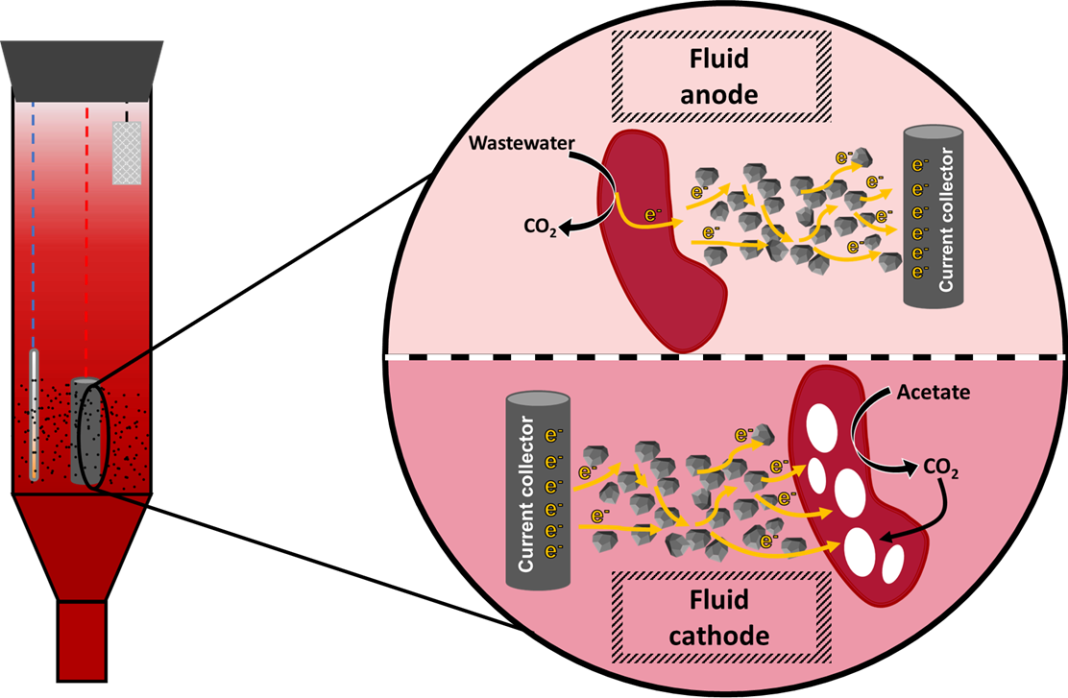The shift towards sustainable wastewater treatment focuses on nutrient recovery through biorefineries, highlighting the importance of microalgae, cyanobacteria, and, more recently, purple phototrophic bacteria for their metabolic flexibility and adaptability
Activated sludge has been the primary strategy for wastewater treatment worldwide for the last century. The efficiency of this process has improved the quality of life and reduced the impact of wastewater on the ecosystem by preventing eutrophication processes. However, given the energetic demand for wastewater treatment, the strategy is now shifting towards nutrient recovery from wastewater instead of pollutant removal (Verstraete et al., 2009).
The introduction of biorefineries
From the combination of circular economy and wastewater treatment, the concept of biorefinery was born. Microalgae and cyanobacteria were considered suitable choices for biorefineries, given their high biomass yields when grown phototrophically in open or closed bioreactors. In addition, their high protein content, as well as the production of fatty acids and carotenoids, makes them a great candidate for feed, health, and agriculture. Microalgae are also considered a key component in biorefineries for bioethanol production; however, the cost-effective production of biofuels remains a research focus.
The benefits of purple phototrophic bacteria
Purple phototrophic bacteria (PPB) are gaining increased attention in the biorefinery sector due to their remarkable metabolic flexibility.
They have the ability to grow in various ways: photoautotrophically, photoheterotrophically, and chemoheterotrophically (Capson-Tojo et al., 2020). Additionally, PPB can manage excess intracellular reductive power through the use of electron sinks (McKinlay & Harwood, 2010).
These electron sinks allow PPB to assimilate carbon while also fixing carbon dioxide, fixing nitrogen, or accumulating polyhydroxyalkanoates (PHA) (J. C. Fradinho et al., 2013; Guzman et al., 2019; McKinlay & Harwood, 2010). Their ability to metabolize a variety of carbon sources, such as volatile fatty acids, toluene, benzene, and ethylbenzene, further adds to their potential. Moreover, the high protein content in PPB biomass makes them an appealing option for biorefineries focused on producing single-cell protein (Morrison et al., 2025).
The metabolic capabilities of PPB have expanded the application of these microorganisms to wastewater treatment, (Bayon-Vicente et al., 2025) thereby leading to the use of PPB microbial biomass for animal feed and fertilizer production (Alloul et al., 2021; Sakarika et al., 2020). For domestic wastewater treatment, discharge limits and pollutant removal were achieved in a photo-anaerobic membrane bioreactor (Hülsen et al., 2016). For industrial wastewater treatment, the efficiency of PPB in producing biomass has been studied for various feedstocks, including piggery wastewater, cheese whey, brewery wastewater, and saline wastewater. Furthermore, recovering nutrients as added-value products, such as microbial biomass, polyhydroxyalkanoates, or hydrogen, is key. Additionally, the scale-up of bioreactors for wastewater treatment, biomass, and polyhydroxyalkanoate production from PPB has also been studied (Adessi et al., 2012; Almeida et al., 2024).
The electroactivity of some species of PPB and their interaction with conductive materials can be utilized to develop metabolic fine-tuning control in photo-microbial electrochemical reactors (Bose et al., 2014; Grattieri et al., 2019). Typically, solid electrodes are used in microbial electrochemistry for studies on biofilms and the extracellular electron transfer process. Bose et al. (2014) discovered that extracellular electron uptake was linked to the operon pioABC; additionally, CO2 fixation and the overexpression of Rubisco are also positively stimulated with a poised electrode. In addition, polyhydroxybutyrate production was enhanced in Rhodopseudomonas palustris TIE-1 in the presence of an electrode under photoelectroautotrophic conditions (Ranaivoarisoa et al., 2019). Furthermore, redox balance in PPB in the presence of a cathode was also studied, resulting in an upregulation of carbon capture and the promotion of polyhydroxyalkanoate synthesis (Díaz-Rullo Edreira et al., 2024). However, biofilm-based studies present limitations in diffusion and migration processes, which could affect biodegradation rates.
Combining microbial electrochemical fluidized bed reactors and purple phototrophic bacteria
In contrast, microbial electrochemical fluidized bed reactors (ME-FBRs) have overcome mass and energy transfer limitations, while simultaneously stimulating the metabolic activity of planktonic electroactive bacteria (Figure 1). Previous studies have demonstrated pollutant and nitrogen removal efficiencies using a fluid-like anode for brewery wastewater treatment (Asensio et al., 2021; Asensio, et al., 2021b; Sara et al., 2020). Furthermore, if the fluid electrode acts as an electron donor, microbial denitrification can be positively stimulated at low carbon concentrations. Thus, the combination of ME-FBR and purple phototrophic bacteria opens a wide field of applications. When the fluid-like electrode acted as a terminal electron acceptor, the polarised reactors with PPB showed a two-fold enhancement in brewery wastewater treatment and a three-fold higher yield compared to non-photosynthetic cultures (Manchon, Muniesa-Merino, et al., 2023). The enrichment of PPB induced a microbial population shift that avoided methanogenesis (Manchon, Muniesa-Merino, et al., 2023). Using fluid-like electrodes as an electron donor stimulates electron sinks, resulting in a seven-fold increase in biomass production during wastewater treatment and a six-fold increase in PHA output.
The combination of purple phototrophic bacteria and microbial electrochemical technologies expands a field full of applications, primarily focused on added-value products such as single-cell protein, polyhydroxybutyrate, and hydrogen. The implementation and optimization of microbial electrochemical fluidized bed reactors might help in the development of a biorefinery model that maximizes nutrient recovery.


